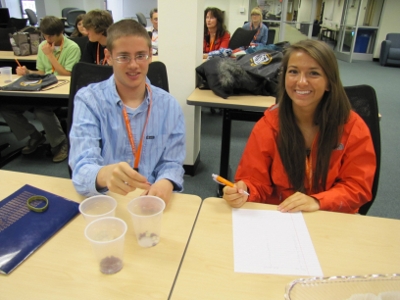
NIMBioS Education Module
The Mathematics of Understanding Disease
This module was developed for grades 9-12, but may be adapted to lower grades. Fighting disease takes every tool that scientists and medical researchers have – including mathematics! In this module, students use manipulatives (beans in a cup) to simulate a disease outbreak and to help develop an understanding of how mathematical disease models are created. In a second activity, students use real world health data and a computer data visualization tool to discover trends about malaria.
This module was designed with NIMBioS collaborator Hands On.
Presentation and Worksheet Files:
Disease Math (.pptx) (.pdf)
Exploring Gapminder Worksheet: (.docx) (.pdf)
Additional Resources:
Module Plan (.docx) (.pdf)
In Defense of Bean Bag Biology (Paper by Jungck, Gaff & Weisstein)
Gapminder World
200 Countries, 200 Years, 4 minutes (Video)
Materials Needed: Dry beans of 2 different colors, scratch paper for recording data, cups, computers, free gapminder software*, worksheet, calculator, pencil
*While there is an interface for Gapminder World available on the web, we recommend that you pre-download the Gapminder Desktop version when using this activity with multiple computers, due to heavy load and slowness on the server when many access the site at once.
Mathematics of Understanding Disease Module in action:
High School Scholars Visit NIMBioS
Other NIMBioS education modules
For further information, please contact:
|
Suzanne Lenhart Associate Director for Education and Outreach Email: slenhart@tennessee.edu Ph: (865) 974-4270 (Math) (865) 974-9349 (NIMBioS) Fax: (865) 974-9300 | |
|
NIMBioS, 1122 Volunteer Blvd., Suite 106 University of Tennessee Knoxville, TN 37996-3410 | |
NIMBioS
1122 Volunteer Blvd., Suite 106
University of Tennessee
Knoxville,
TN 37996-3410
PH: (865) 974-9334
FAX: (865) 974-9461
Contact NIMBioS


